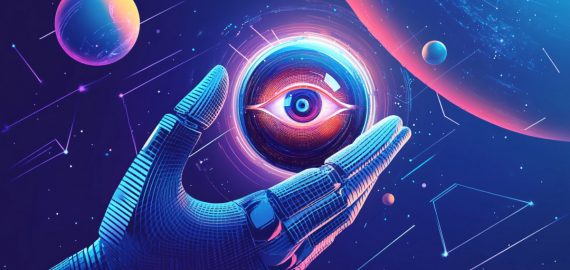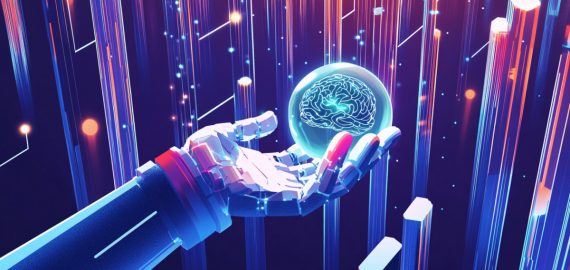# The Future of Data Storage: Trends and Innovations
The way we store and manage data is undergoing
# The Limitations of Traditional Data Storage
Traditional data storage solutions, such as centralized servers and cloud storage, have several limitations:
1. *Security risks*: Centralized data storage creates a single point of failure, making it vulnerable to cyber attacks and data breaches.
2. *Scalability issues*: Traditional data storage solutions can become expensive and difficult to scale as data volumes grow.
3. *Dependence on intermediaries*: Centralized data storage often relies on intermediaries, such as cloud providers, which can lead to data ownership and control issues.
# Decentralized Data Storage: A New Paradigm
Decentralized data storage solutions, such as blockchain-based systems and peer-to-peer networks, offer several advantages:
1. *Security*: Decentralized data storage solutions use cryptography and distributed ledger technology to ensure data security and integrity.
2. *Scalability*: Decentralized data storage solutions can scale more easily, as data is stored across a network of nodes rather than a single central location.
3. *Autonomy*: Decentralized data storage solutions give users more control over their data, eliminating the need for intermediaries.
# Key Technologies in Decentralized Data Storage
Several key technologies are driving the development of decentralized data storage solutions:
1. *Blockchain*: Blockchain technology provides a secure and transparent way to store and manage data.
2. *InterPlanetary File System (IPFS)*: IPFS is a decentralized storage protocol that allows files to be stored and shared across a network of nodes.
3. *Distributed hash tables (DHTs)*: DHTs are a type of data structure that allows for efficient and scalable data storage and retrieval.
# Applications of Decentralized Data Storage
Decentralized data storage solutions have a wide range of applications:
1. *Cloud storage*: Decentralized cloud storage solutions can provide more secure and scalable storage options for businesses and individuals.
2. *Data archiving*: Decentralized data storage solutions can be used for long-term data archiving, ensuring that data is preserved and accessible over time.
3. *Artificial intelligence and machine learning*: Decentralized data storage solutions can provide secure and scalable storage for AI and ML applications.
# Conclusion
The future of data storage is decentralized, secure, and scalable. By understanding the trends and innovations shaping the industry, businesses and individuals can make informed decisions about their data storage needs.
# Recommendations
1. *Explore decentralized data storage solutions*: Consider using decentralized data storage solutions, such as blockchain-based systems or peer-to-peer networks.
2. *Evaluate security and scalability*: Assess the security and scalability of decentralized data storage solutions to ensure they meet your needs.
3. *Consider data ownership and control*: Think about data ownership and control when selecting a decentralized data storage solution.
4. *Stay informed about industry developments*: Stay up-to-date with the latest trends and innovations in decentralized data storage.
5. *Develop a data storage strategy*: Develop a data storage strategy that takes into account your business or individual needs.
$IMT is revolutionizing cloud computing with its decentralized solutions*
$IMT
$IMT aiming to provide a more secure, efficient, and community-driven approach. By leveraging blockchain technology and decentralized networks, $IMT seeks to address the limitations and concerns associated with traditional centralized cloud computing models.
Key Benefits of $IMT's Decentralized Cloud Computing
- *Enhanced Security*: Decentralized networks provide an additional layer of security, making it more difficult for hackers to access and manipulate data.
- *Improved Efficiency*: $IMT's decentralized architecture enables faster data processing and transfer, reducing latency and increasing overall efficiency.
- *Community-Driven*: $IMT's decentralized model allows for community involvement and governance, ensuring that the network is transparent, fair, and responsive to user needs.
How $IMT's Decentralized Cloud Computing Works
- *Blockchain-Based Data Storage*: $IMT utilizes blockchain technology to store and manage data, providing a secure, transparent, and tamper-proof record of all transactions.
- *Decentralized Network Architecture*: $IMT's decentralized network architecture enables data to be stored and processed across a network of nodes, rather than relying on a single centralized server.
- *Token-Based Incentives*: $IMT's token-based incentives encourage users to contribute resources and participate in the network, ensuring its continued growth and development.
Potential Applications and Use Cases
- *Data Storage and Management*: $IMT's decentralized cloud computing solutions can be used for secure and efficient data storage and management.
- *Artificial Intelligence and Machine Learning*: $IMT's decentralized network architecture can be leveraged to support AI and ML applications, enabling faster and more secure data processing.
- *Internet of Things (IoT)*: $IMT's decentralized cloud computing solutions can be used to support IoT applications, enabling secure and efficient data processing and management.
Conclusion
$IMT's decentralized cloud computing solutions have the potential to revolutionize the way we think about data storage, management, and processing. By providing a more secure, efficient, and community-driven approach, $IMT is poised to make a significant impact in the cloud computing industry.

AshuBajwaB60
2025/04/01 11:00
# __The Impact of Virtual Reality on Architecture and Real Estate__
Virtual reality (VR) is transforming the architecture and real estate industries, providing a new and innovative way to design, build, and sell properties. By utilizing VR technology, architects, designers, and real estate agents can create immersive and interactive experiences, enabling clients to fully visualize and explore spaces before they are built. In this article, we'll explore the impact of VR on architecture and real estate, highlighting the benefits, challenges, and future directions of this emerging technology.
# Benefits of Virtual Reality in Architecture and Real Estate
The benefits of VR in architecture and real estate are numerous, including:
1. *Improved Visualization*: VR enables clients to fully visualize and explore spaces, reducing the risk of miscommunication and improving design accuracy.
2. *Enhanced Collaboration*: VR facilitates collaboration between architects, designers, and clients, enabling real-time feedback and design iteration.
3. *Increased Efficiency*: VR streamlines the design and construction process, reducing the need for physical prototypes and minimizing errors.
4. *Cost Savings*: VR can reduce costs associated with physical prototypes, travel, and site visits.
# Challenges Facing Virtual Reality Adoption in Architecture and Real Estate
Despite the benefits of VR in architecture and real estate, there are several challenges facing adoption, including:
1. *High Upfront Costs*: The cost of VR equipment and software can be prohibitively expensive for small firms and individuals.
2. *Limited Content Creation*: Creating high-quality VR content requires specialized skills and expertise, limiting the availability of VR experiences.
3. *User Experience*: VR experiences can be disorienting and uncomfortable for some users, particularly those with motion sickness or other sensitivities.
4. *Integration with Existing Workflows*: VR technology must be integrated with existing workflows and software, requiring significant investment in training and implementation.
# Future Directions for Virtual Reality in Architecture and Real Estate
The future of VR in architecture and real estate holds much promise, with potential developments in:
1. *Cloud-Based VR Platforms*: Cloud-based VR platforms can enable seamless collaboration and content sharing, reducing the need for expensive hardware and software.
2. *Artificial Intelligence and Machine Learning*: AI and ML can enhance VR experiences, enabling real-time design iteration and optimization.
3. *Mixed Reality and Augmented Reality*: Mixed reality (MR) and augmented reality (AR) can further blur the lines between physical and digital environments, enabling new and innovative applications in architecture and real estate.
4. *Virtual Property Tours*: Virtual property tours can become increasingly common, enabling clients to explore properties remotely and reducing the need for physical site visits.
# Conclusion
Virtual reality is transforming the architecture and real estate industries, providing a new and innovative way to design, build, and sell properties. While challenges remain, the benefits of VR are clear, and the industry is expected to continue to grow and evolve in the coming years.
# Recommendations
1. *Invest in VR Equipment and Software*: Invest in VR equipment and software to enable the creation of high-quality VR experiences.
2. *Develop VR Content Creation Skills*: Develop VR content creation skills to enable the creation of high-quality VR experiences.
3. *Integrate VR with Existing Workflows*: Integrate VR technology with existing workflows and software to enable seamless collaboration and content sharing.
4. *Promote VR Adoption*: Promote VR adoption among architects, designers, and real estate agents to enable the widespread adoption of this emerging technology.
5. *Support Research and Development*: Support research and development in VR technology, focusing on cloud-based platforms, AI, and MR/AR applications.

AshuBajwaB60
2025/04/01 10:38
# __The Future of Sustainable Agriculture: How Vertical Farming is Revolutionizing the Industry__
The world is facing a significant challenge in feeding its growing population, while also addressing the environmental impact of traditional agriculture. Vertical farming, also known as indoor agriculture, is a revolutionary approach that is transforming the way we grow crops. By using vertically stacked layers, advanced hydroponics, and LED lighting, vertical farming is increasing crop yields, reducing water consumption, and minimizing environmental impact. In this article, we'll explore the future of sustainable agriculture, highlighting the benefits, challenges, and future directions of vertical farming.
# Benefits of Vertical Farming
The benefits of vertical farming are numerous, including:
1. *Increased Crop Yields*: Vertical farming enables farmers to grow crops in vertically stacked layers, increasing yields per square foot.
2. *Water Conservation*: Advanced hydroponics and aeroponics systems minimize water consumption, reducing the environmental impact of farming.
3. *Reduced Land Use*: By growing crops indoors, vertical farming reduces the need for arable land, preserving natural habitats and ecosystems.
4. *Improved Crop Quality*: Vertical farming enables farmers to control temperature, humidity, and light levels, improving crop quality and reducing the need for pesticides.
# Challenges Facing Vertical Farming
Despite the benefits of vertical farming, there are several challenges facing the industry, including:
1. *High Initial Investment*: The initial investment required to establish a vertical farm can be prohibitively expensive, particularly for small-scale farmers.
2. *Energy Consumption*: Vertical farming requires significant amounts of energy to power LED lighting, heating, and cooling systems.
3. *Limited Crop Selection*: Vertical farming is currently limited to growing certain types of crops, such as leafy greens, herbs, and microgreens.
4. *Labor Costs*: Vertical farming requires a high level of labor to maintain and monitor the crops, which can increase labor costs.
# Future Directions for Vertical Farming
The future of vertical farming holds much promise, with potential developments in:
1. *Advanced Hydroponics and Aeroponics*: Advances in hydroponics and aeroponics systems will improve water efficiency, reduce waste, and increase crop yields.
2. *LED Lighting and Energy Efficiency*: Improvements in LED lighting technology will reduce energy consumption, while also increasing crop yields and quality.
3. *Artificial Intelligence and Machine Learning*: The integration of artificial intelligence (AI) and machine learning (ML) algorithms will enable farmers to optimize crop growth, predict yields, and reduce waste.
4. *Urban Agriculture and Community Engagement*: Vertical farming will play a critical role in urban agriculture, enabling communities to grow their own food, reduce food deserts, and promote sustainable living.
# Conclusion
Vertical farming is revolutionizing the agriculture industry, enabling farmers to grow crops in a more sustainable, efficient, and productive way. While challenges remain, the benefits of vertical farming are clear, and the industry is expected to continue to grow and evolve in the coming years.
# Recommendations
1. *Invest in Research and Development*: Invest in research and development to improve the efficiency, productivity, and sustainability of vertical farming systems.
2. *Develop Energy-Efficient Solutions*: Develop energy-efficient solutions, such as advanced LED lighting and renewable energy systems, to reduce the environmental impact of vertical farming.
3. *Promote Urban Agriculture and Community Engagement*: Promote urban agriculture and community engagement, enabling communities to grow their own food, reduce food deserts, and promote sustainable living.
4. *Support Small-Scale Farmers*: Support small-scale farmers by providing access to funding, training, and resources, enabling them to establish and maintain successful vertical farms.
5. *Encourage Policy and Regulatory Support*: Encourage policy and regulatory support for vertical farming, providing incentives for farmers to adopt sustainable and innovative practices.

BGUSER-QZHZGCP4
2025/03/31 19:58
IMT: Unlocking the Power of Information Management and Technology*
$IMT
Introduction
In today's digital age, effective information management and technology (IMT) are crucial for businesses, organizations, and individuals to thrive. $IMT is a revolutionary token that aims to unlock the full potential of IMT, enabling seamless data management, secure transactions, and innovative solutions. In this article, we'll delve into the world of $IMT and explore its features, benefits, and potential applications.
What is $IMT?
$IMT is a utility token designed to facilitate the development and implementation of IMT solutions. It's built on a decentralized platform, ensuring secure, transparent, and efficient transactions. The token's primary focus is on information management, data analytics, and technology integration.
Key Features of $IMT
Some of the key features of $IMT include:
- *Decentralized Data Management*: $IMT enables secure, decentralized data storage and management, ensuring that sensitive information is protected.
- *AI-Powered Analytics*: The token utilizes artificial intelligence (AI) and machine learning (ML) algorithms to provide actionable insights and data analytics.
- *Interoperability*: $IMT facilitates seamless integration with various technologies, platforms, and systems, promoting interoperability and efficiency.
- *Community-Driven*: The $IMT ecosystem is community-driven, allowing developers, users, and stakeholders to contribute to the token's growth and development.
Benefits of $IMT
The benefits of $IMT are numerous, including:
- *Enhanced Data Security*: Decentralized data management and AI-powered analytics ensure that sensitive information is protected and secure.
- *Improved Efficiency*: $IMT's interoperability feature enables seamless integration with various technologies, promoting efficiency and reducing costs.
- *Innovative Solutions*: The token's community-driven approach fosters innovation, allowing developers and users to create new solutions and applications.
- *Potential for Growth*: As the demand for IMT solutions increases, the potential for $IMT's value to appreciate grows, making it an attractive investment opportunity.
Potential Applications of $IMT
The potential applications of $IMT are vast, including:
- *Healthcare*: Secure and decentralized data management for medical records and research.
- *Finance*: AI-powered analytics and risk management for financial institutions.
- *Supply Chain Management*: Interoperable and efficient tracking and monitoring of goods and services.
- *Education*: Personalized learning experiences through AI-powered analytics and data management.
Conclusion
$IMT is a revolutionary token that unlocks the power of information management and technology. With its decentralized data management, AI-powered analytics, interoperability, and community-driven approach, $IMT has the potential to transform various industries and applications. As the demand for IMT solutions grows, $IMT's value is likely to appreciate, making it an attractive investment opportunity.
References:
[1] $IMT Whitepaper. (2022). Unlocking the Power of Information Management and Technology.
[2] CoinMarketCap. (2024). $IMT Price Chart.
[3] CryptoSlate. (2024). $IMT Price Prediction.


 最低價
最低價 最高價
最高價 

















































Mintlayer 社群媒體數據
過去 24 小時,Mintlayer 社群媒體情緒分數是 1,社群媒體上對 Mintlayer 價格走勢偏向 看跌。Mintlayer 社群媒體得分是 29,539,在所有加密貨幣中排名第 538。
根據 LunarCrush 統計,過去 24 小時,社群媒體共提及加密貨幣 1,058,120 次,其中 Mintlayer 被提及次數佔比 0%,在所有加密貨幣中排名第 603。
過去 24 小時,共有 273 個獨立用戶談論了 Mintlayer,總共提及 Mintlayer 29 次,然而,與前一天相比,獨立用戶數 增加 了 25%,總提及次數增加。
Twitter 上,過去 24 小時共有 1 篇推文提及 Mintlayer,其中 0% 看漲 Mintlayer,100% 篇推文看跌 Mintlayer,而 0% 則對 Mintlayer 保持中立。
在 Reddit 上,最近 24 小時共有 6 篇貼文提到了 Mintlayer,相比之前 24 小時總提及次數 增加 了 50%。
社群媒體資訊概況
1